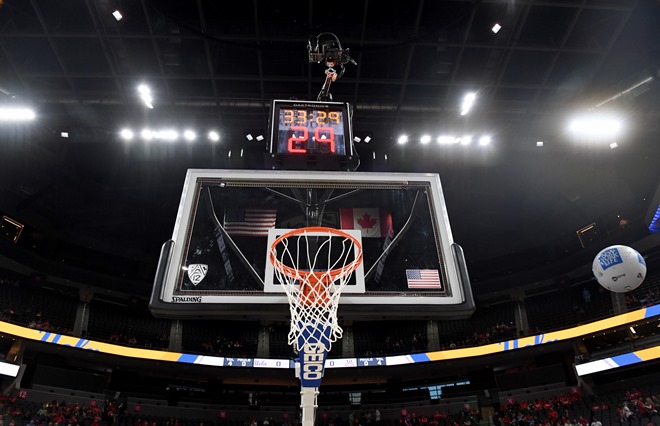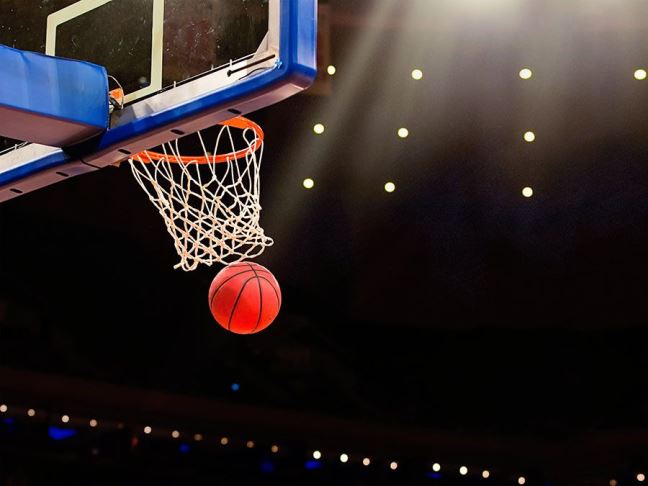The regulation height of a basketball hoop has remained unchanged since the sport’s inception, creating a consistent standard that connects playground enthusiasts to NBA superstars. Whether you’re installing a backyard court, coaching youth players, or simply curious about basketball specifications, understanding the standard basketball hoop height and its variations across different age groups is essential for proper skill development and enjoyable play.
The History and Standard Basketball Hoop Height
The Origin of the 10-Foot Standard
The standard height of a basketball hoop is 10 feet (3.05 meters) from the floor to the rim. This measurement has remained unchanged since Dr. James Naismith invented basketball in 1891. Interestingly, this height wasn’t determined through careful analysis or scientific research. Naismith simply hung the first peach baskets on a gymnasium balcony railing, which happened to be 10 feet above the floor. This historical accident has become one of basketball’s most enduring standards.
“The rim of a basketball hoop is universally set at 10 feet, or 3.048 meters, off the ground. This height was established by James Naismith, the inventor of basketball, who nailed the first peach basket at this height on a gymnasium balcony,” explains a basketball equipment expert.
Why the 10-Foot Standard Has Endured

The 10-foot height has proven remarkably resilient for several compelling reasons:
- Universality: This standardized height creates consistency across all levels of play, from local gyms to professional arenas
- Accessibility: It presents an appropriate challenge for adult players while remaining achievable enough to maintain game flow
- Historical Continuity: The unchanged height connects today’s players with basketball’s 130+ year heritage.
Despite significant changes in player height and athletic ability over decades, this standard has struck an ideal balance between challenge and playability, requiring skill without being prohibitively difficult.
Basketball Hoop Heights for Different Age Groups
Age-Appropriate Adjustments
While 10 feet remains the standard for high school, college, and professional play, basketball organizers worldwide recognize the importance of modified heights for younger players. These adjustments allow children to develop proper shooting mechanics without struggling against a regulation hoop that’s simply too high for their physical capabilities.
The recommended basketball hoop heights by age group typically follow this progression:
- Ages 5-7: 6-7 feet (1.83-2.13 meters)
- Ages 8-9: 8 feet (2.44 meters)
- Ages 10-11: 9 feet (2.74 meters)
- Ages 12 and older: 10 feet (3.05 meters)
“For children, hoops may be lowered to anywhere between 6 to 8 feet to make the game more enjoyable and to allow them to develop proper technique before they are physically able to play at the regulation height,” notes a youth basketball development guide1.
Benefits of Adjustable Basketball Systems
For home courts and recreational facilities, adjustable basketball hoops offer excellent versatility for families and mixed-age groups. These systems typically allow height adjustments from approximately 7 feet up to the regulation 10 feet, accommodating players as they grow and develop.

The advantages of adjustable systems include:
- Growth compatibility for developing players
- Shared use among family members of different ages and abilities
- Progressive skill development opportunities
- Customized practice environments
Modern adjustable systems feature user-friendly mechanisms that make height changes quick and straightforward, allowing players to tailor their practice experience to their developmental needs.
Complete Basketball Hoop Specifications
Beyond Height: Other Critical Dimensions
While hoop height receives the most attention, a regulation basketball setup includes several other standardized measurements:
- Rim Diameter: 18 inches (46 cm)
- Backboard Dimensions: In the NBA, regulation backboards measure 42 inches tall by 72 inches wide (107cm x 183cm)
- Net Length: Typically 15-18 inches (38-45.7 cm)
- Rim Distance from Backboard: 6 inches (15.2 cm)
These specifications ensure consistency across playing environments and provide manufacturing standards for basketball equipment producers.
Professional Installation Considerations

For permanent basketball hoop installations, proper measurement and mounting are crucial to achieving the regulation 10-foot height. Professional installations follow specific protocols:
- Establishing a level reference point on the playing surface
- Measuring vertically to determine backboard and rim positioning
- Using precision tools to verify the final 10-foot height
- Testing multiple points around the rim to ensure levelness
These exacting standards ensure fair play and consistent conditions across different courts and facilities.
The Impact of Hoop Height on Basketball Skills
Shooting Mechanics and Development
The 10-foot regulation height requires specific shooting mechanics for optimal success. Players must develop:
- Proper arc on the ball (typically 45-60 degrees)
- Sufficient power generation from legs and core
- Coordinated release timing
- Effective follow-through technique
For younger players, attempting to shoot on a regulation hoop often leads to compromised mechanics—pushing the ball from the hip or chest rather than developing proper form. Age-appropriate lower hoops allow children to focus on technique without sacrificing form for height.
Dunking and Athletic Challenge
The 10-foot height places dunking—one of basketball’s most spectacular elements—at the edge of human athletic capability2. This creates an aspirational challenge that has driven the development of extraordinary athletes while maintaining dunking as a skill that requires exceptional vertical leaping ability.
“The 10-foot hoop height is one reason dunking is such a celebrated skill in basketball. It requires significant athletic ability to jump high enough to dunk a basketball in a 10-foot high hoop,” explains a basketball training expert2.
Measuring and Verifying Basketball Hoop Height
DIY Methods for Checking Hoop Height

For home or recreational courts, several methods can verify whether a basketball hoop meets the standard 10-foot height:
Method 1: Using a tape measure:
- Place a ladder safely beneath the hoop
- Extend a tape measure from the floor directly below the rim to the top edge of the rim
- Ensure the tape is perfectly vertical using a level
Method 2: Using a basketball as a reference:
- A standard basketball is approximately 9.4 inches in diameter
- Count how many basketball heights would fit between your maximum reach and the rim
- Add this distance to your reaching height to calculate the approximate rim height
These simple methods can help ensure your practice environment matches regulation specifications.
Frequently Asked Questions About Basketball Hoop Height
What is the official height of an NBA basketball hoop?
The official height of an NBA basketball hoop is 10 feet (3.05 meters) from the floor to the top of the rim. This height is identical to the standard used in college, high school, and international basketball. Despite the evolution of the game and players over 130+ years, this height has remained unchanged since James Naismith invented the game in 1891.
Why are basketball hoops set at 10 feet high?
Basketball hoops are 10 feet high because of historical circumstance rather than deliberate design. When Dr. James Naismith invented basketball in 1891, he hung peach baskets on the railing of a gymnasium balcony, which happened to be 10 feet from the floor. This height proved to provide an appropriate balance of challenge and accessibility. It requires skill and proper technique to shoot successfully while remaining achievable enough to maintain game flow and scoring.
What is the recommended basketball hoop height for a 10-year-old?
The recommended basketball hoop height for a 10-year-old is typically 9 feet (2.74 meters). This lower height allows children to develop proper shooting mechanics without sacrificing form to generate enough power to reach a regulation rim. As children grow and strengthen, a progressive approach to hoop height helps them maintain good technique while adapting to increased physical demands. Adjustable basketball systems are ideal for home use, as they can be modified as children develop.
How can I measure my basketball hoop to ensure it’s at regulation height?
To measure your basketball hoop height, use a tape measure from the playing surface directly below the rim to the top edge of the rim. Ensure the tape is perfectly vertical using a level. For greater precision, measure from multiple points around the rim to verify both height and levelness. If a tape measure isn’t available, you can use a basketball (9.4 inches in diameter) as a reference, counting how many ball heights would fit between your maximum reach and the rim.
Do women’s basketball leagues use a lower hoop height?
No, women’s basketball leagues, including the WNBA, NCAA women’s basketball, and international women’s competitions, use the same 10-foot (3.05-meter) rim height as men’s leagues. Despite physical differences between male and female athletes, the standardized hoop height maintains consistency across all levels of professional and organized basketball, regardless of gender.
Does the basketball hoop height change in different international leagues?
No, the 10-foot (3.05-meter) basketball hoop height is standardized across all major international basketball leagues and competitions. FIBA (International Basketball Federation), which governs international competition, maintains the same rim height as the NBA, NCAA, and other major organizations. While some court dimensions and rules may vary between leagues (such as three-point line distance), the rim height remains constant worldwide.
When should a young player transition to a regulation height basketball hoop?
Young players should transition to a regulation 10-foot basketball hoop around age 12, though this may vary based on individual physical development and skill level. The recommended progression typically follows this pattern: ages 5-7: 6-7 feet; ages 8-9: 8 feet; ages 10-11: 9 feet; ages 12+: 10 feet (regulation). This gradual increase allows players to develop proper shooting mechanics at each stage while building the strength and technique needed for regulation play.
Conclusion
The standard 10-foot height of a basketball hoop represents one of sports’ most enduring measurements a constant that has shaped basketball’s evolution from its invention in 1891 to today’s global phenomenon. This seemingly simple specification has influenced everything from player development techniques to the athletic profiles valued at basketball’s highest levels.
For young players, understanding the progression of appropriate hoop heights provides a roadmap for proper skill development. Starting with lower hoops allows children to focus on fundamental techniques without developing compensatory mechanics, gradually preparing them for the regulation height they’ll use throughout organized competition.
Whether you’re setting up a backyard court, coaching youth basketball, or simply appreciating the game as a fan, the 10-foot standard connects playground pickup games to professional arenas through a shared vertical challenge one that has proven remarkably resilient and effective for over 130 years of basketball history.



